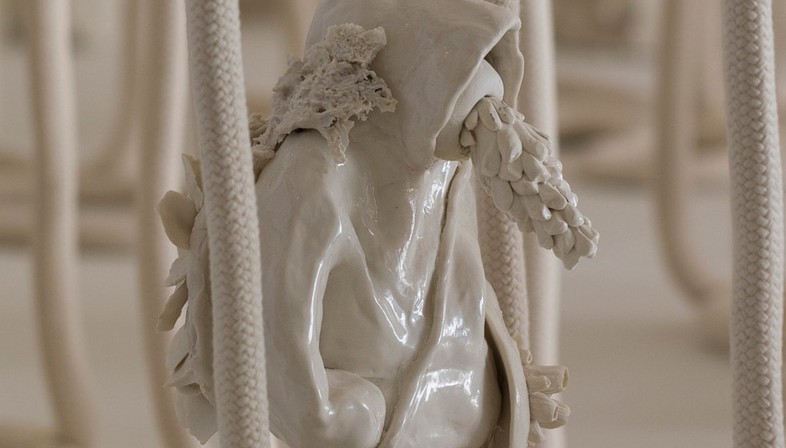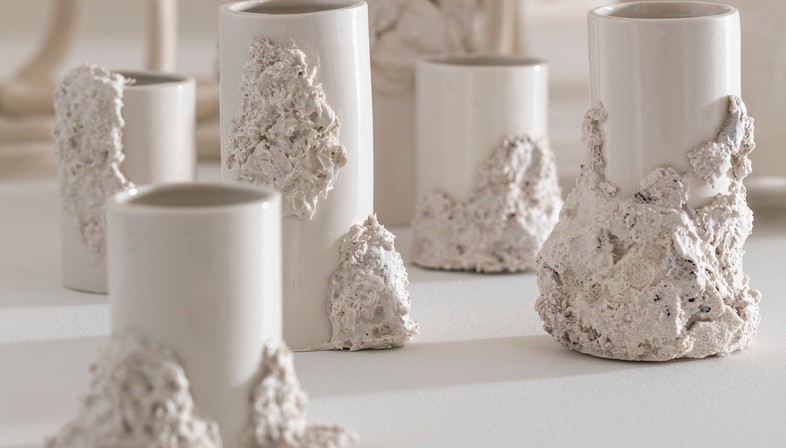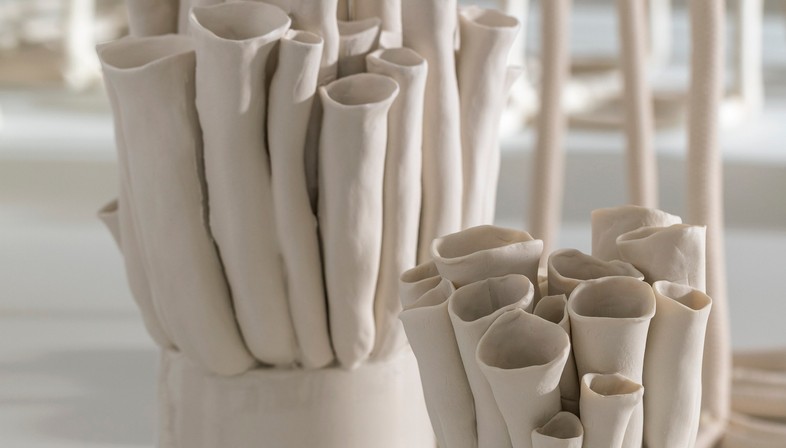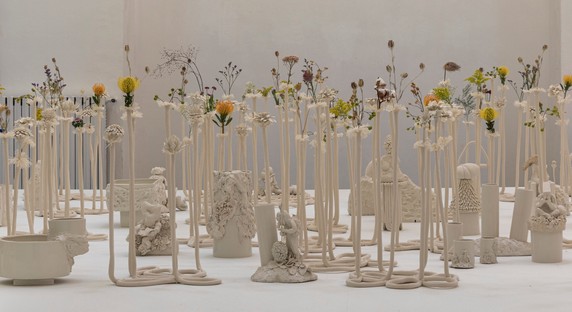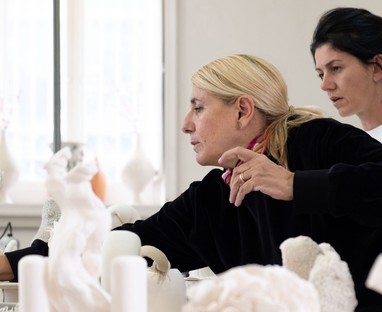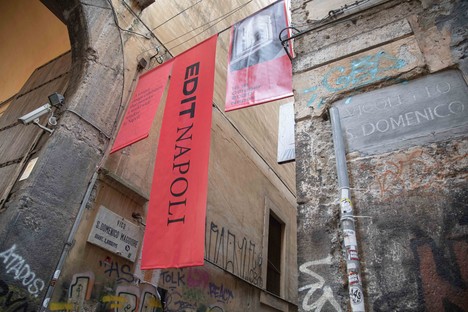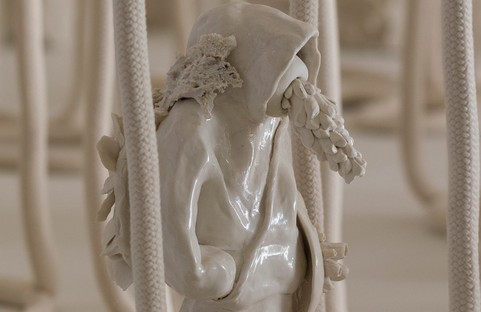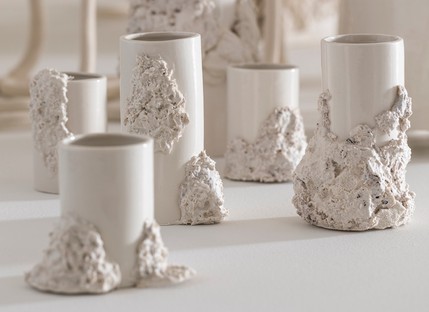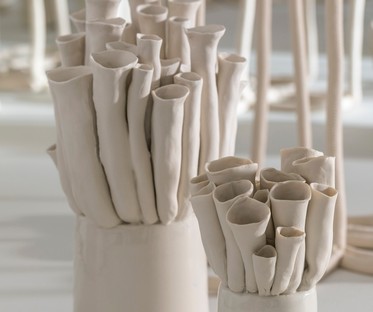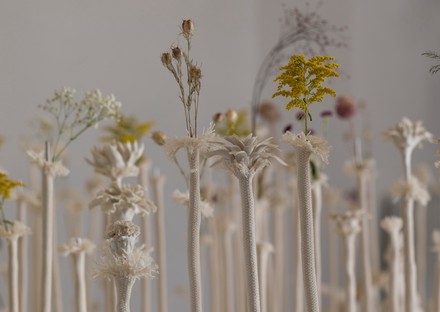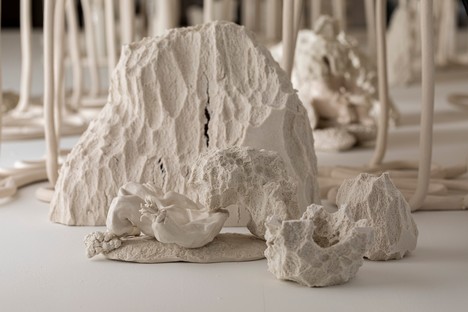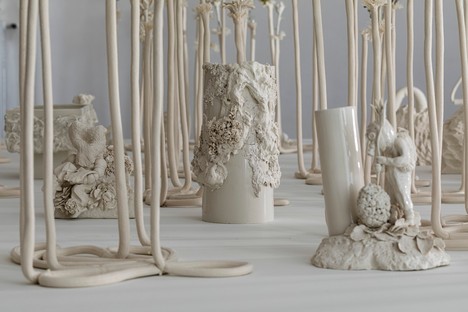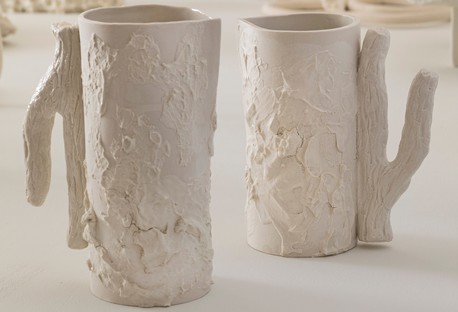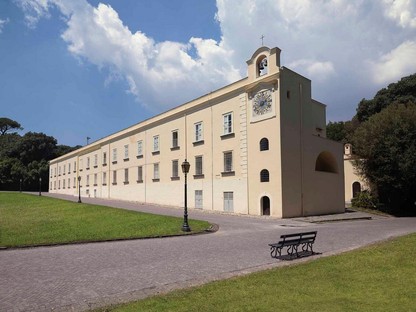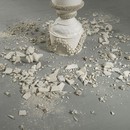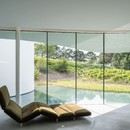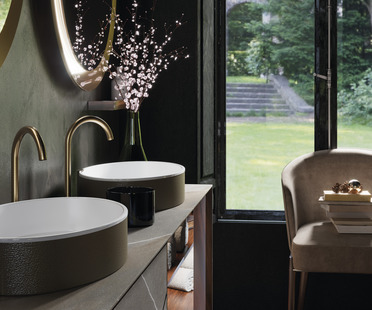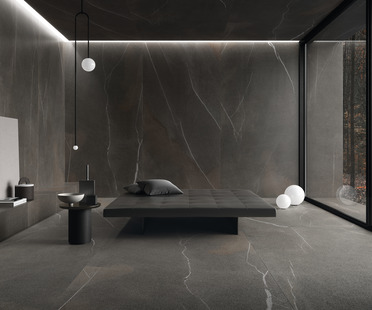22-09-2022
Patricia Urquiola’s hybrids in Capodimonte
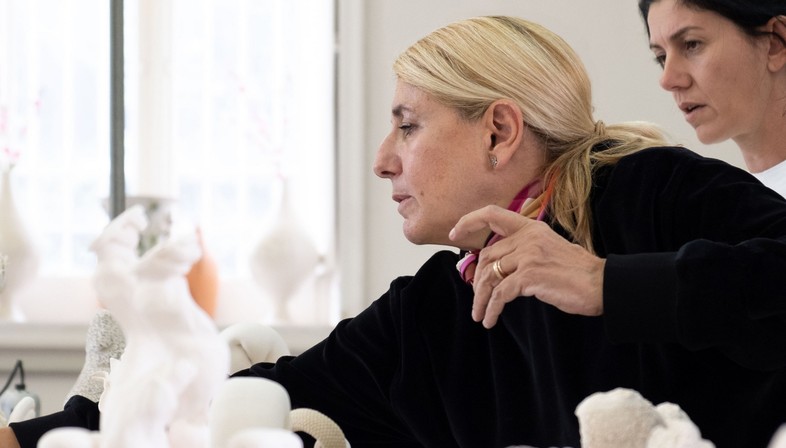
In 2020 Domitilla Dardi and Emilia Petruccelli, founders of Edit Napoli, an exhibition of artistic design, invited Patricia Urquiola to work on a project with Istituto Caselli, a regional school located in the forest of Capodimonte, in the buildings of the Real Fabbrica di Porcellana, the former Royal Porcelain Manufacture of the Kingdom of Naples, to convey the importance of this ancient art to a new generation. 2021 saw the launch of the collection produced under the project: Hybrida, a series of objects, vases, little sculptures and porcelain centrepieces in which the designer, working with students and teachers at the school, integrates alternative materials such as sponges and ropes, bark, flowers and moss from the forest. The forms of the collection recall those of nature, but without slavish imitation, bringing them to life as if in a transformation between anthropomorphic figures and natural materials, a sort of cultivated process of evolution in progress. The resulting prototypes were featured in last October’s Hybrida exhibition at the third edition of Edit Napoli, then Christie’s auctioned them off as unique items, financing the reclamation of the botanical garden in the courtyard of the historic building housing Istituto Caselli. The garden will be inaugurated during the fourth edition of Edit Napoli, scheduled for October 7 through 9.
“Projects can make a mark,” says Patricia Urquiola, “and generate more projects. Edit Napoli’s project with Istituto Caselli had a time frame, it was supposed to last a year, but it brought about further developments, working together on the garden. And this is an important tool for study, for the students at Caselli school: it’s very important for them to observe nature, and to integrate the forest, and the garden, into their porcelain creations. The Hybrida project became a process of alchemy, of transformation of matter. What better place than Naples for a project inspired by alchemy! Working with Capodimonte porcelain brings to mind a particular word: Albedo. Albedo is the second stage in the transformation of alchemy, coming after Nigredo, the first phase of necessary decomposition. Albedo is the state of purification, of rebirth in white; a feminine phase, without rules, which is the way I see this project.”
p class="text"> Urquiola’s work goes hand in hand with irony in the little anthropomorphic figures of Hybrida, combining nature with humanity, in delicate white Capodimonte porcelain and the complex procedures involved in working with it: “The intention was to demonstrate to the students that they can find what they need right here, at home,” continues Urquiola, “as our local porcelain owes so much to botanical observation. But there is no need to repeat the forms of the past: floral motifs can evolve. We reflected and tried different ways of using materials from nature, trials that were very complicated and involved a lot of experimentation in the integration and firing of these materials. In the end, we realised that we need to be more permeated with nature. We ourselves are a part of nature, albeit a ‘bothersome’ part, that is harmful for nature itself: but nature is always with us, even when we don’t think it is. We ought to be proud of the botanical roots of the local tradition of Capodimonte, but it should also inspire us to experiment, to seek out the flaws that are a part of nature.”
The Hybrida collection will be featured this year by Made in Edit, a label promoting experimental partnerships of local artisans with the Italian and international designers invited to Naples during the various editions of Edit. A number of the prototypes of Hybrida emerging out of Patricia Urquiola’s research with Istituto Caselli have thus become replicable items, making a concrete mark on the production of Capodimonte porcelain, such as Anemone, a vase with a round base topped by thin, supple containers like anemones, vases incorporating sponges and lichens, or a candleholder made of rope with porcelain flowers. All rigorously in white, in the unmistakeable milky hues of the traditional local porcelain.
Antonella Galli
Captions and photo credits
Images courtesy of Edit Napoli
01 Hybrida installation, by Patricia Urquiola, in collaboration with Istituto Caselli Real Fabbrica di Capodimonte; photo credits: Serena Eller.
02 Patricia Urquiola in the workshop in Capodimonte; photo credits: Alessandra Mustilli.
03 Edit Napoli premises in the San Domenico Maggiore monumental complex; photo credits: Elio Rosato.
04-10 The Hybrida collection, by Patricia Urquiola in collaboration with Istituto Caselli, Real Fabbrica di Capodimonte; photo credits: Serena Eller.
11 The home of the Real Fabbrica di Capodimonte porcelain manufacture and Istituto Caselli school. Photo credits: Istituto ad Indirizzo raro Caselli - Real Fabbrica di Capodimonte.











